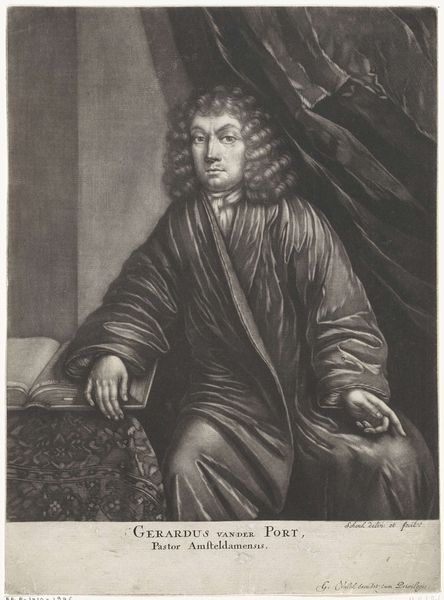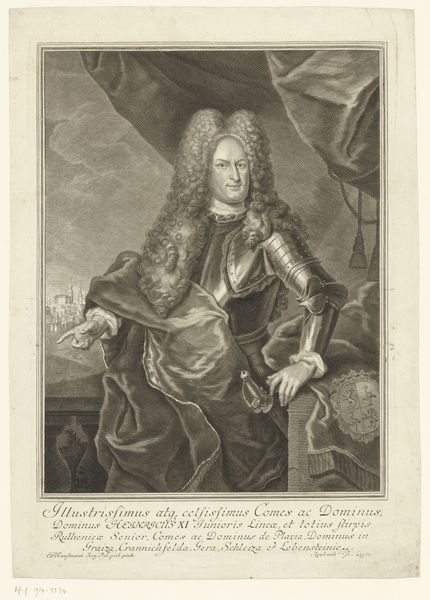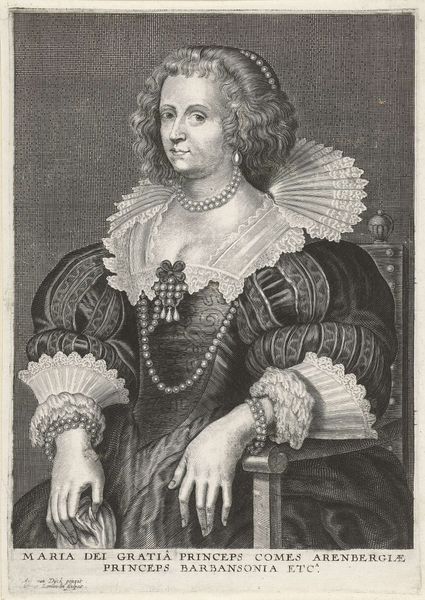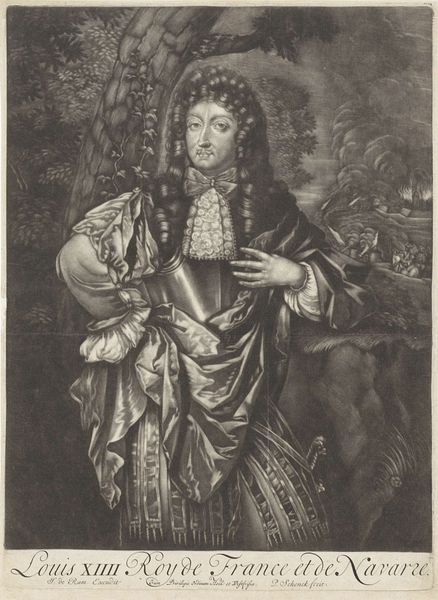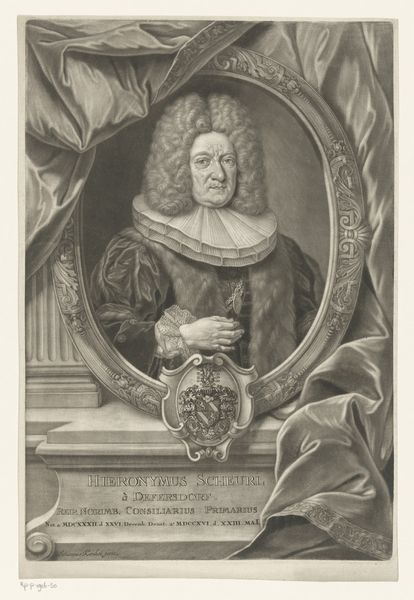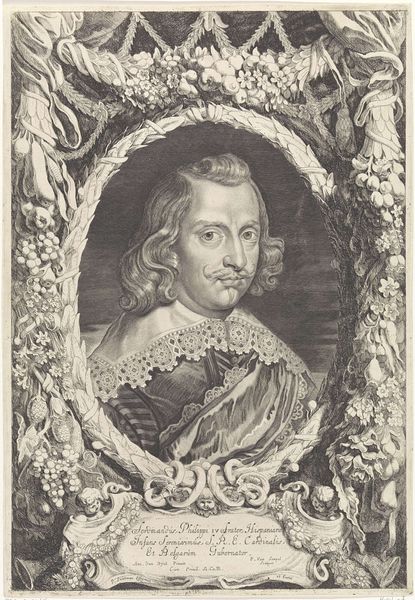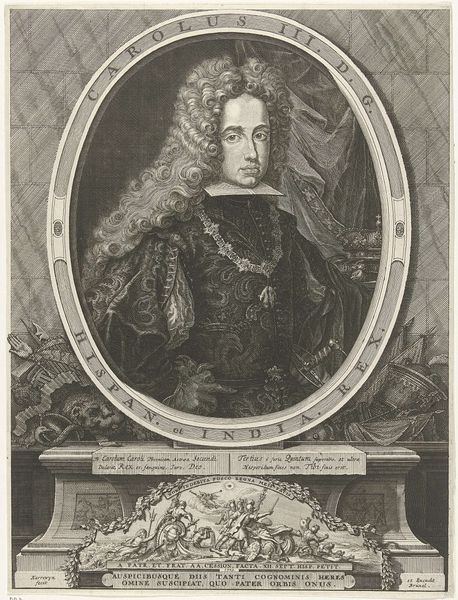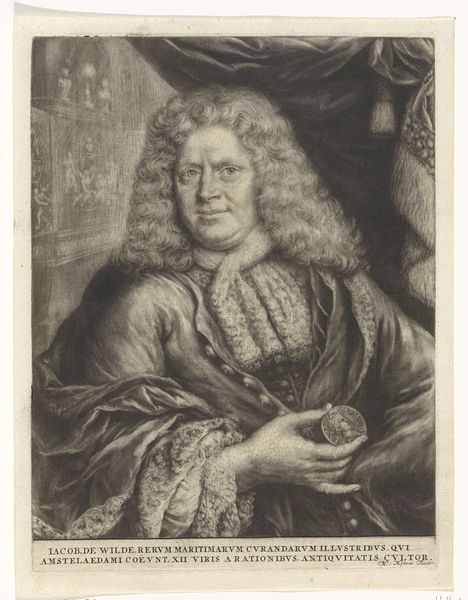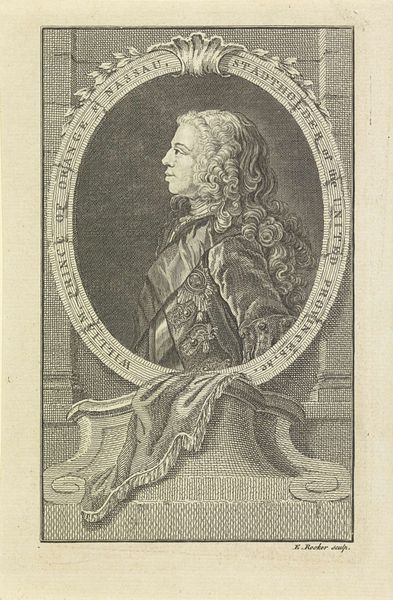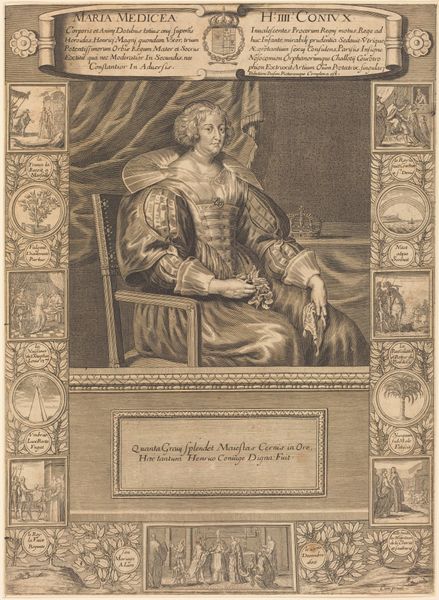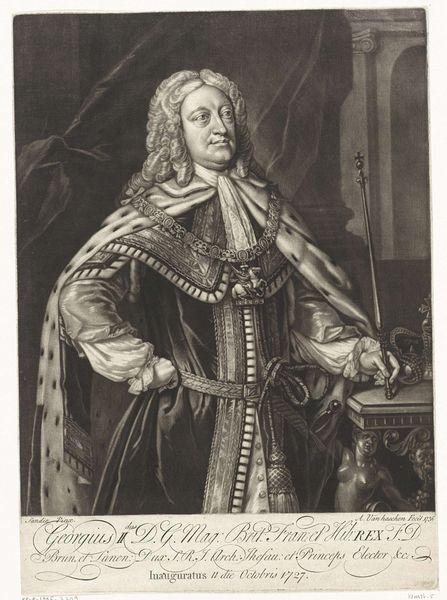
engraving
#
portrait
#
baroque
#
engraving
Dimensions: height 338 mm, width 257 mm
Copyright: Rijks Museum: Open Domain
Curator: The Rijksmuseum holds this striking self-portrait by Pieter Schenk, dating roughly between 1680 and 1713. Editor: It has a wonderfully staged feel, like a scene from a play. Melancholy, but also theatrical, and really makes you think about representation and status. Curator: It's a Baroque portrait, so the theatrics aren’t entirely surprising. What intrigues me is that Schenk was first and foremost an engraver. The emphasis on capturing light, the very act of carving these details into a copper plate, really foregrounds the labour of production. Editor: Absolutely. Think about who would commission or consume prints like this. They were essentially a luxury item—accessible, but still objects representing a certain level of taste and economic status. It begs the question: What was Schenk trying to communicate about himself to the world through this carefully constructed image? Curator: The composition guides our perception as well, particularly the details. Schenk, quite deliberately, incorporates references to his profession: we see a small statue on the table by the window, perhaps nodding to his work as a map and print seller. The ornate jacket, and the drapery, speak to class and influence too. Editor: I noticed the inscription beneath the image – Petrus Schenk Sculptor – associating himself explicitly with sculpting, as well as referencing his origin. In a sense, he’s curating his own identity, consciously framing his narrative for posterity. It shows how crucial these self-portraits were in shaping an artist’s brand and legacy. Curator: Right. This wasn't simply about capturing a likeness; it was about constructing and distributing an identity through skilled labor and readily available printed material. And it worked, we're still talking about it centuries later! Editor: Yes! It truly highlights the lasting public presence that carefully crafted artwork can establish and maintain throughout history.
Comments
No comments
Be the first to comment and join the conversation on the ultimate creative platform.


